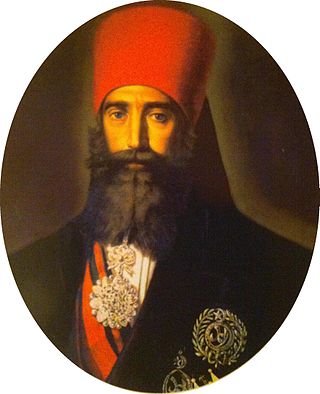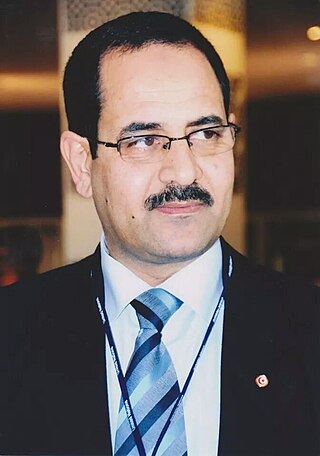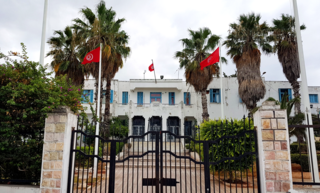
Tunisian culture is a product of more than three thousand years of history and an important multi-ethnic influx. Ancient Tunisia was a major civilization crossing through history; different cultures, civilizations and multiple successive dynasties contributed to the culture of the country over centuries with varying degrees of influence. Among these cultures were the Carthaginian – their native civilization, Roman, Vandal, Jewish, Christian, Arab, Islamic, Turkish, and French, in addition to native Amazigh. This unique mixture of cultures made Tunisia, with its strategic geographical location in the Mediterranean, the core of several civilizations of Mare Nostrum.

The Tunisian Football Federation is the governing body of football in Tunisia. It established in 1957. It became a member in the FIFA in 1960, and in the same year it also became a member of CAF association. It organises the football league, the Tunisian Ligue Professionnelle 1, the Tunisia national football team and the Tunisia women's national football team. It is based in Tunis.

The Bourse des Valeurs Mobilières de Tunis (BVMT) or Bourse de Tunis is a stock exchange based in Tunis, Tunisia. It was founded in 1969, and currently lists around 50 stocks.

Ahmad I, born 2 December 1805 in Tunis died 30 May 1855 at La Goulette, was the tenth Husainid Bey of Tunis, ruling from 1837 until his death. He was responsible for the abolition of slavery in Tunisia in 1846.
The Établissement de la Radiodiffusion-Télévision Tunisienne (ERTT) – French for Tunisian Radio and Television Establishment – was Tunisia's state broadcasting organization from 1990 until 2007 before it was split into the Tunisian Television Establishment and the Tunisian Radio Establishment. It operated two national television channels and several radio stations.
Abdelaziz Gorgi was a Tunisian artist. He was one of the founders of the Tunis School of painting and one of the most prominent members of Tunisia's cultural scene.

El Watania 1, also known as Télévision Tunisienne 1, is the first Tunisian public national television channel. It is owned and operated by Télévision Tunisienne. Formerly named RTT (1966–1983), RTT 1 (1983–1992), TV7 (1992–1997), Tunis 7 (1997–2008), Tunisie 7 (2008–2011), it has been known as El Watania 1 since 2011.

El Watania 2, also known as Télévision Tunisienne 2, is the second Tunisian public national television channel. It is owned and operated by Télévision Tunisienne. Formerly known as Canal 21 (1994–2007), then as Tunisie 21 (2007–2011), and as El Watania 2 since 2011. The television channel started broadcasting on November 7, 1994.

La Presse, founded in 1934, is a large-circulation French-language daily newspaper published in Tunis, Tunisia.

Mohamed Moncef Marzouki is a Tunisian politician who served as the fifth president of Tunisia from 2011 to 2014. Through his career he has been a human rights activist, physician and politician. On 12 December 2011, he was elected President of Tunisia by the Constituent Assembly.

Ridha Saidi is a Tunisian politician. He serves as the Minister of Economy under Prime Minister Hamadi Jebali.

Mezri Haddad is a Tunisian journalist, writer, philosopher and diplomat. Haddad was a doctor of moral and political philosophy at the Paris-Sorbonne University, and the first Muslim candidate to be qualified by the National Council of French universities as a lecturer in Catholic theology. He is the author of several essays that focus on politics and religion.
Music in Tunisian Arabic has appeared in the 17th century. It has developed a lot since the 19th century and has spread all over Tunisia mainly after the creation of Radio Tunis and Établissement de la radiodiffusion-télévision tunisienne. Nowadays, Tunisian Arabic has become the main language of songs in Tunisia including Tunisian music, Underground music and Opera.
Mohamed Gueddiche was a Tunisian cardiologist, who also held a senior military rank. His national significance in Tunusia was based in part on his position as the personal physician to President Ben Ali, and previous to that as a physician for Ben Ali's predecessor, Habib Bourguiba.

Sami Fehri is a Tunisian entrepreneur, producer and director. He is also the founder of the private Tunisian channel “Ettounsiya TV” and the general director of the private production Company Cactus Production.

Ali Chaouch was a Tunisian politician and government minister.

Ettadhamen is a municipality Tunisia It part of the Aryanah governorate attached to the agglomeration of Tunis. It resulted from the split in 2016 of the municipality of Ettadhamen-Mnihla, establishing Mnihla as a separate municipality. Ettadhamen means "solidarity". The municipality was created in the 1950s with the arrival of populations from internal migration. Formerly an illegal settlement, it was then integrated into the urban plan of the Tunisian agglomeration.

The Établissement de la Radio Tunisienne is Tunisia's state-owned public radio broadcaster. It was formed in August 2007, when the former national state broadcaster ERTT was split into separate radio and television companies. Tunisian Radio operates ten stations, four nationwide and six regionally. It is an active member of the European Broadcasting Union (EBU) and the Arab States Broadcasting Union (ABSU).

The Établissement de la Télévision Tunisienne is Tunisia's national state-owned public service television broadcaster. The company was established by the country's president Zine El Abidine Ben Ali in August 2007, by dividing the country's former state broadcaster ERTT into separate companies for radio and television. Tunisian television operates two nationwide television channels and is an active member of the European Broadcasting Union (EBU) and the Arab States Broadcasting Union (ABSU).
















